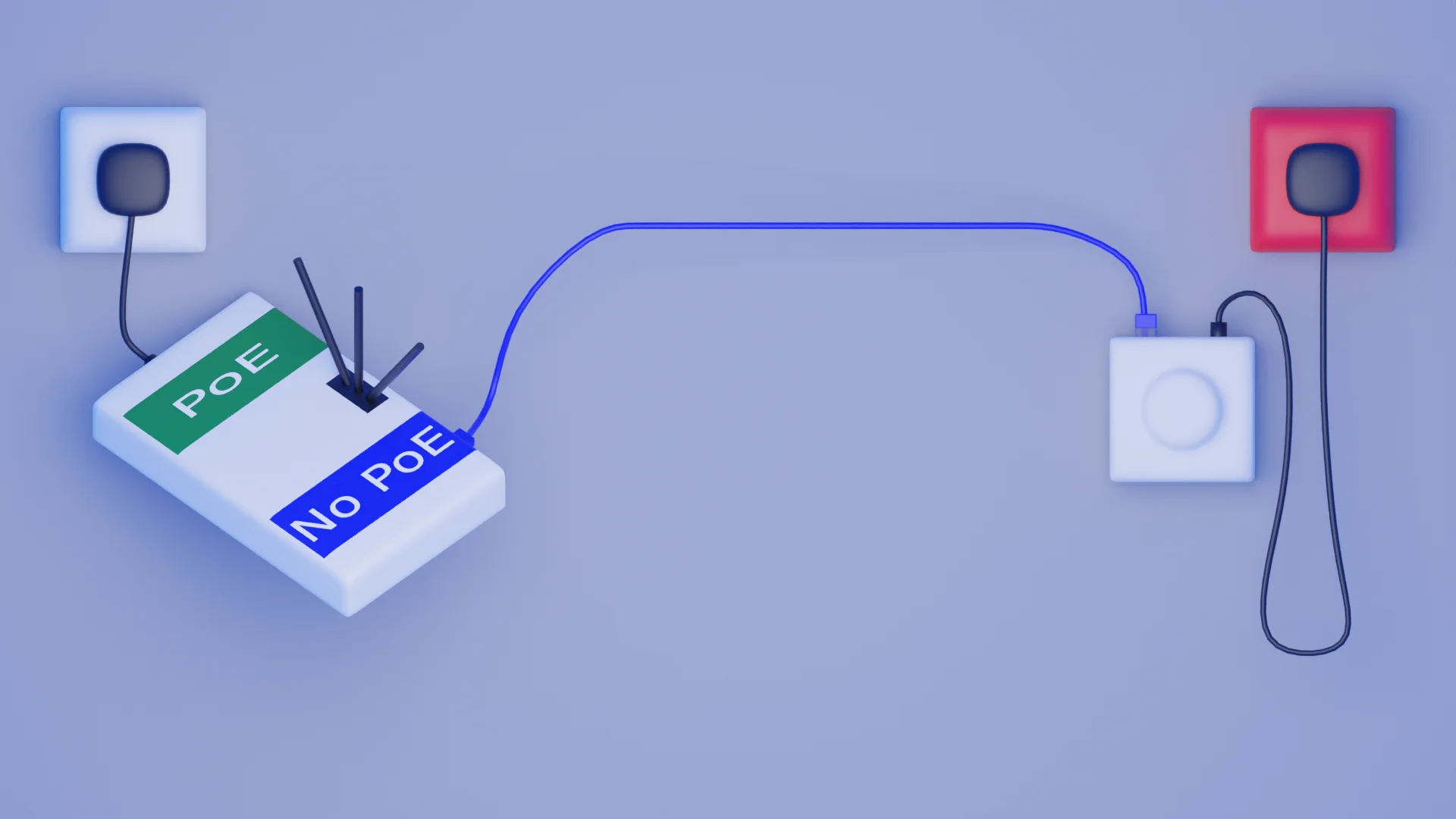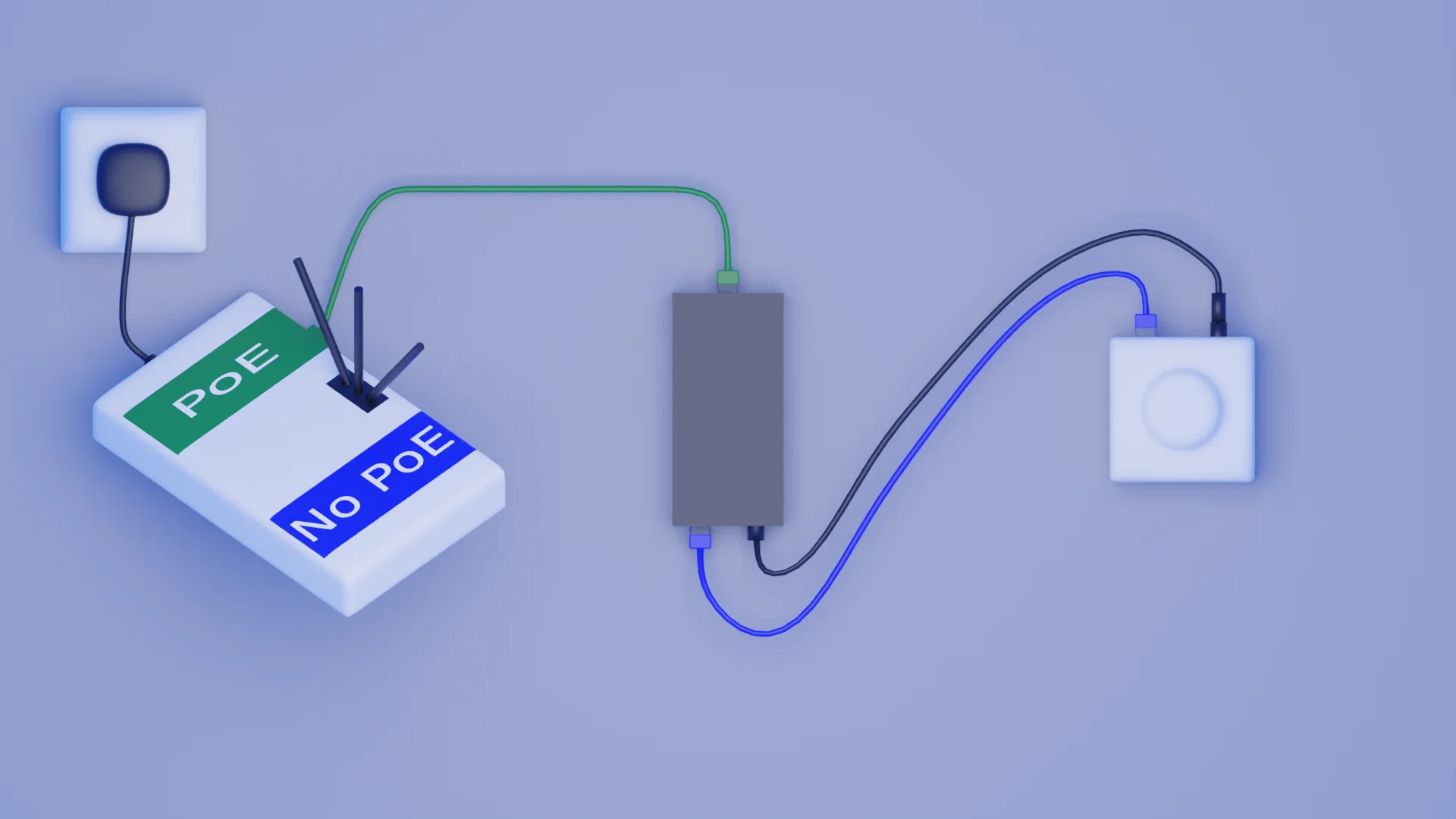- Making the Most of Your Smart Home: Common Use Cases - March 28, 2023
- Eco Mode at Night: Maximizing Nest’s Energy Savings - March 20, 2023
- Connecting & Controlling Smart Home Devices: A Guide - March 18, 2023
Disclosure: Links marked with * are Affiliate Links. As an Amazon Associate, I earn from qualifying purchases if you decide to make a purchase through these links – at no cost for you!
A smart home solution must also be aesthetically smart and appealing. Flying routing is the enemy of aesthetics, as are power cables that are routed along edges without trim. Not to mention power cables that are routed from a free socket to the device in flying, picturesquely sagging routing – an interior design, design and aesthetic anathema.
Smart Home devices like the Philips Hue Bridge* without their own Wi-Fi need a wired connection to a Wi-Fi base station – there must be a network cable running to them. There is no way around this cable – the interface to Wi-Fi and thus to smartphones and tablets is an integral part of a concept for a Smart Home.
The annoyance is the power supply that has to be routed to the Philips Hue Bridge parallel to the network cable. If there is no power outlet at the device’s installation site, you have to work awkwardly with unsightly extension cables to bring power to the Philips Hue Bridge.
The topic of this article is how to use PoE to not have to realize the long distance from the power supply to the smart home device with power cables, but to use the – anyway necessary – data cabling to transport power to the immediate vicinity of the Philips Hue Bridge and supply the Philips Hue Bridge with power via a PoE splitter.
The look of the Philips Hue Bridge is not spoiled by the addition of tangled wires, the cool vibe of the smart home and the Philips smart home solution is preserved.
IMPORTANT: If the Philips Hue Bridge is not powered by the supplied power supply, but by other means, the manufacturer’s warranty will be void.
Check Price:
Table of Contents
The wiring of the Philips Hue Bridge
The Philips Hue Bridge needs – mandatory to be smart – an Ethernet connection to a device that makes the Hue Bridge accessible via Wi-Fi and Internet protocols. This Ethernet connection is realized via a copper cable, more precisely via a twisted pair cable connection that connects the access point for Wi-Fi and Internet with the Philips Hue Bridge.
Schematic of common power and data wiring of Philips Hue Bridge (lengths of cables and dimensions of devices are not to scale):

Explanation: The Philips Hue Bridge in usual wiring. The connection with the switch/Wi-Fi access point is limited to data connection, power must be routed separately to the installation site of the Philips Hue Bridge. The red marked socket is representative for the entire run of power cables from the nearest wall socket to the installation location of the Philips Hue Bridge.
For power, the Philips Hue Bridge for Smart Home ships with a power adapter that draws: 5 volts and a maximum of 600 mA, according to the manufacturer (ibid.) (although the Philips Hue Bridge draws a maximum of 250 mA, stand-by 0.1 watts).
Since such power can be transported via PoE and twisted-pair cabling, the following applies for Philips Hue Bridge et al. according to Walter “Walt” Whitman: “In the cable forest two paths present themselves to us”.
Let’s look at the path less traveled so far, the PoE path.
Because of 5 V – 600 mA = 3 watts, a power supply that delivers 3 watts with 5 volts is sufficient. Commercially available are 5 – 10 watts for 5 volt solutions. A device that supplies 5 volts voltage and 600 mA direct current can – loosely based on Alessandro Volta, André-Marie Ampère, James Watt, James Clerk Maxwell et al – supply the Philips Hue Bridge.
Physically not a problem – what needs to be considered is the required passive (cabling) and active infrastructure.
Direct current with 600 mA and 5 volt voltage is a current that can be transported without problems via cabling from Cat. 5 upwards. The authors of these lines have not yet had a twisted pair cable in their hands that would not have sufficed Cat. 5, new cabling today is usually done with Cat. 6 and better.
The issue is more difficult:
Active infrastructure
The active component on the other side of the cable must supply useful current to the cable. This is done by PoE ports of PoE capable switches.
On the Philips Hue Bridge side, power and data delivered together over the twisted pair cable connection must be split. This is done by PoE splitters.
The Philips Hue Bridge cannot power itself via PoE, it requires an intermediary PoE splitter to redistribute power and data delivered together via twisted pair cabling.
One annoying incompatibility has to be taken into account: The Philips Hue Bridge has a socket for a 2.5 mm hollow plug for connecting the included power supply, but PoE splitters for the German market are often shipped with connection cables with 2.1 mm hollow plugs. To correct this incompatibility, an adapter with a 2.1 mm hollow socket and 2.5 mm hollow plug is needed. Costs: in the single-digit euro range.
Implementing this concept results in the following wiring diagram (lengths of cables and dimensions of devices are not to scale):

Explanation: The Philips Hue Bridge is powered by the PoE splitter. The switch/Wi-Fi access point puts data and useful current on the cable, the PoE splitter splits those, passes the data through and supplies power to the Philips Hue Bridge via a short connection cable and an adapter from 2.1 mm to 2.5 mm. The need to route power separately to the Philips Hue Bridge is eliminated.
Check Price:
And that’s it. No flying power cables across, the PoE port of the switch supplies the Philips Hue Bridge with power via the PoE splitter over a pleasantly short and easy-to-hide cable.
Related questions
How do I find out if my switch/Wi-Fi access point has a PoE port?
PoE is a value-added feature that would find mentioned in descriptions, certainly in manufacturers’ technical documentation.
My switch/Wi-Fi access point does not have a PoE port. What to do?
For such cases, there are PoE injectors* that enrich the data connection on the cable with useful current.
Check Price:
The PoE injector – placed anywhere outside the field of view of the living area along the route of the twisted pair cable connection near a power supply – takes on the task of applying useful current to the cable. Data arrives on the twisted pair cable, data and useful current come out on the outgoing twisted pair cable.
Is it possible to test the quality of the useful current supplied via PoE?
There are test devices for twisted pair cabling and connections – vulgo: “cable testers” – with which the quality of a PoE connection can be checked.
Conclusion
Powering the Philips Hue Bridge via PoE port and PoE splitter is a simple and inexpensive to implement workaround against unsightly cable clutter at the device’s installation site.
Common twisted pair cabling can be used for PoE, infrastructure components for such a solution are commercially available.
Attention: When installing electronic equipment, please be sure to observe the manufacturer’s safety instructions. You have to take care of your own safety. The information on this site only helps you to learn.
Disclosure: This website is the property of Martin Lütkemeyer and is operated by Martin Lütkemeyer. Martin Lütkemeyer is a member of the Amazon Services LLC Affiliate Program, an affiliate advertising program designed to enable Web sites to earn advertising revenue through advertising and linking to Amazon.com. Links marked with * are affiliate links.



